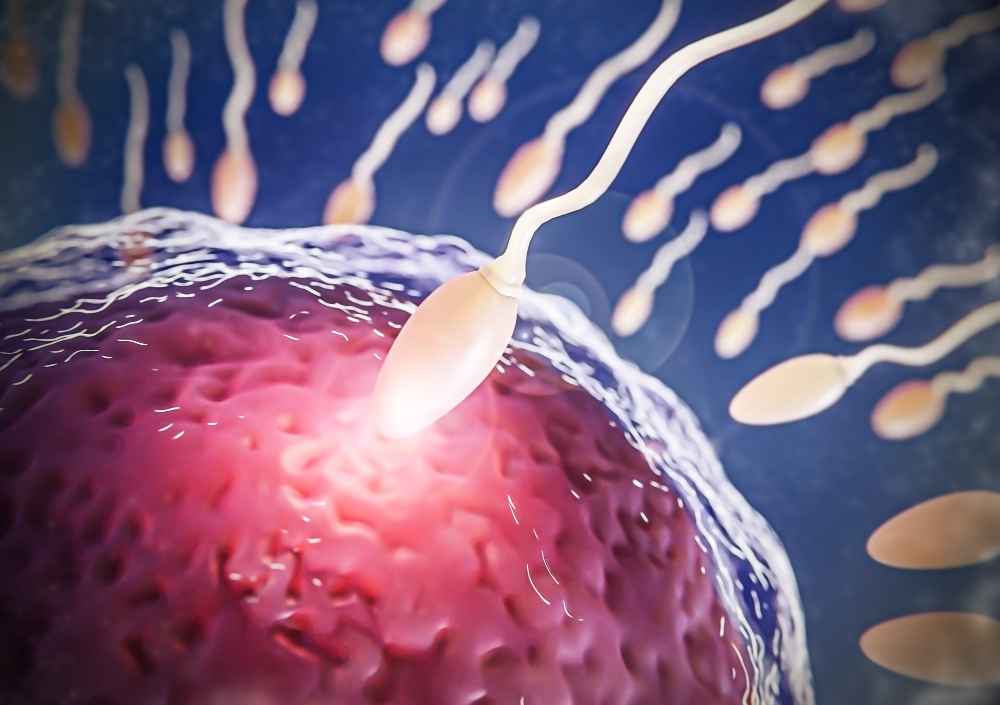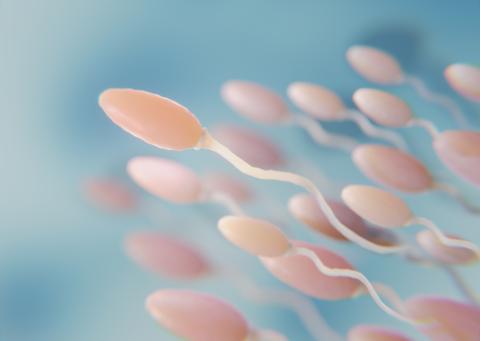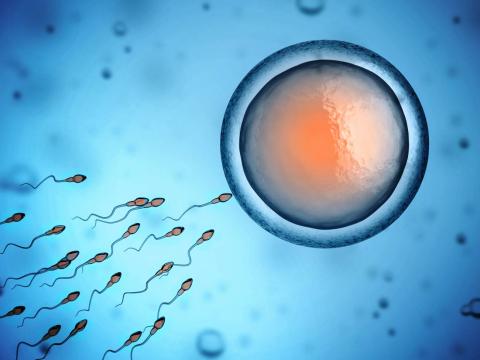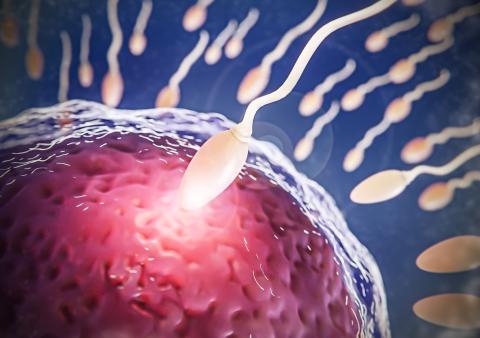Reactions: Ultrasounds increase sperm mobility by 266%
A team of researchers has demonstrated how a non-invasive ultrasound technique can increase the movement of human sperm in the laboratory by up to 266%. Using microfluidic droplets to evaluate individual sperm cells, which had not been done before, they found that ultrasound exposure induced movement in immobile sperm and improved swimming speeds in mobile ones. The work is published today in the journal Science Advances.

Rocío Núñez - espermatozoides
Rocío Núñez Calonge
Scientific Director of the UR International Group and Coordinator of the Ethics Group of the Spanish Fertility Society
One of the main problems in cases of male infertility is asthenozoospermia, that is, the lack of sperm mobility. Especially when the cause is unknown. To solve this, assisted reproduction techniques such as ICSI are used, where only one mobile sperm is needed to introduce it into the oocyte.
The authors present a study with a novel method to improve and even induce the mobility of immobile sperm. For this, they use a microfluidic droplet platform, where they individually introduce sperm and subject them to ultrasound. By isolating the sperm within the droplets, although acoustic transmission causes some movement of the droplets and there is flow within them, individual cells can be easily identified before and after exposure.
The study is well-designed and the conclusions are supported by solid data. The results show that sperm with low initial mobility are those that experience the greatest change in mobility after ultrasound exposure (at 800 mW and 40 MHz). The percentage of non-progressive sperm in a sample is reduced from 36% to only 10% after 20 seconds of ultrasound treatment. This increase in motility is even more profound when it comes to immobile sperm, as it causes 34% of live immobile sperm to become mobile after exposure.
It is known that the lack of sperm mobility is associated with a disturbance in mitochondria, which is like the "engine" of sperm, which requires energy. In this work, to elucidate the underlying mechanism behind the increased mobility caused by ultrasound, the regulation of mitochondrial function was evaluated by controlling mitochondrial membrane potential levels, or in other words, verifying energy supply within the cell, which can affect mobility. The results demonstrated that ultrasound application improved this potential.
The real significance of this work lies in its potential application in cases of patients with completely immobile sperm or in testicular biopsy samples. In these cases, techniques have been applied, as they themselves describe, such as pentoxifylline, a substance that, when applied to sperm, induces movement. However, its safety is not proven, and it is not useful in many cases. Therefore, being able to use a technique that is non-invasive for sperm, without the need for staining or chemical treatment, offers tremendous potential for improving clinical outcomes through ICSI.
Despite accurately describing the results, the press release does not highlight this utility, which is the most important aspect of the study.
Antonio Urries - espermatozoides
Antonio Urries
Director of the Assisted Reproduction Unit at Quirónsalud Hospital in Zaragoza and president of the Association for the Study of Reproductive Biology (ASEBIR).
Assisted reproduction techniques have been improving their outcomes since the birth of the first baby in England in 1976, but in recent years, we have seen how this progressive improvement has stalled despite the incorporation of advanced and costly technologies in our laboratories. We have managed to increase our predictive capacity and improve the study and diagnosis of the embryos we obtain in in vitro fertilization cycles, but without substantially increasing the pregnancy options for our patients. We know very well what a good embryo should be like and we identify it, but we still have a long way to go to know how to improve the quality of those embryos.
That's why lately the focus has been turning towards the development of new basic laboratory techniques that allow us better treatment and processing of gametes, both eggs and sperm, and this work would fit perfectly into this approach.
In this sense, logic suggests that an increase in sperm motility should be important within a reproductive process, but it has not really been seen to be so decisive when applying in vitro fertilization techniques.
In practice, we have been able to verify that there is not such a direct relationship between motility and fertilizing capacity, and often we encounter normal sperm, with good motility, that are not capable of fertilizing the egg; while others, with poorer motility, have no problem doing so.
The explanation lies in the fact that there are other factors involved in the process with equal or even greater importance, such as the interaction between membrane proteins existing in the sperm head and in the zona pellucida of the egg, a point that is not considered in this study.
A separate issue would be that of men with completely immobile sperm (severe asthenozoospermia) or those obtained through testicular biopsy since, often, in these cases sperm motility is practically zero, which does not allow distinguishing viable sperm from dead ones, increasing the risk of total failure of egg fertilization in the case of using the latter. The possibility of activating such motility through ultrasound (in 33%), as indicated by the authors, would allow selecting viable sperm, thereby improving fertilization rates in these situations.
In conclusion, as with any laboratory improvement, it is important to objectively define the cases in which the technique may clearly be indicated. In situations of severe absence of sperm motility, it could serve us to easily distinguish viable sperm from non-viable ones, but it remains to be shown whether this increase in motility actually translates generally into an increase in egg fertilization rates and better embryo quality.
Rita Vassena - espermatozoides
Rita Vassena
Co-founder and CEO of Fecundis, a company developing assisted reproduction treatments, and previously scientific director of the Eugin Group
The press release faithfully reflects the content of the article and does not make claims that are not supported by the evidence presented in the study.
The study is of good quality, and in order to study the effect of ultrasound on sperm movement, the authors have constructed a special microfluidic device to analyze the sperm response at the level of individual cells.
The conclusions appear to be robust, although the sample size is not very high. Nevertheless, considering the clear and consistent differences between controls and treated groups, and the fact that this is a preliminary study, I believe the results are well-founded and the conclusions are supported.
It is a novel study; there is little evidence on the use of high-frequency ultrasound to stimulate sperm movement, and it has never been analyzed at the level of single cells, so the information provided is interesting and has the potential to be used in clinical settings. In fact, this work combines two very interesting techniques: high-frequency ultrasound and a droplet microfluidic system that allows the analysis of sperm one by one. Furthermore, this study attempts to go beyond and provide a biochemical and molecular explanation of how the observed increase in sperm motility occurs. The authors associate the effect with variations in the membrane potential of the sperm, a key factor in achieving the appropriate mobility for fertilization and subsequent embryo development.
Beyond the relatively small number of samples, and even smaller number of individuals included in the study, there are no specific limitations in the study. Since the study remains at the level of analyzed semen samples and there are no clinical results after its use in patients, the question remains open as to whether the improvements observed in vitro in sperm motility will translate into improvements in the clinical outcomes of patients.
According to the WHO, there are 186 million people worldwide suffering from infertility, and half of the cases are due to male infertility. However, a small minority of patients seek treatment and overcome the disease. One of the most important reasons for this very low access to treatments is the costs involved and their low efficacy. Faced with this emergency and an absolutely neglected disease at a global level, the results of this study indicate a possible strategy to adapt low-technology treatments, such as classic in vitro insemination or intrauterine insemination, to more severe cases. If the results were to be confirmed in a clinical setting, and their safety for developing embryos were to be verified, we could have a tool to make fertility treatments more accessible and successful.
"I am co-founder and CEO of Fecundis, a startup dedicated to developing treatments for infertility focused on sperm. I am a member of the Board of Directors of the SEF, the Spanish Society of Fertility. I am part of the scientific advisory board of companies in the field of infertility treatments, such as Future Fertility (Canada), Exseed Health (UK), and Annaida Technologies (Switzerland)".
Vafaie et al.
- Research article
- Peer reviewed



